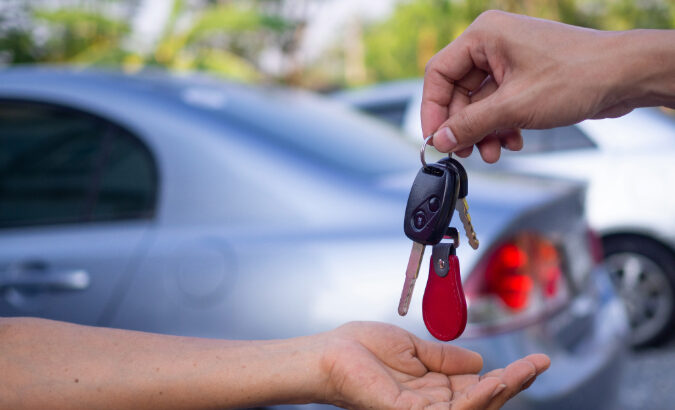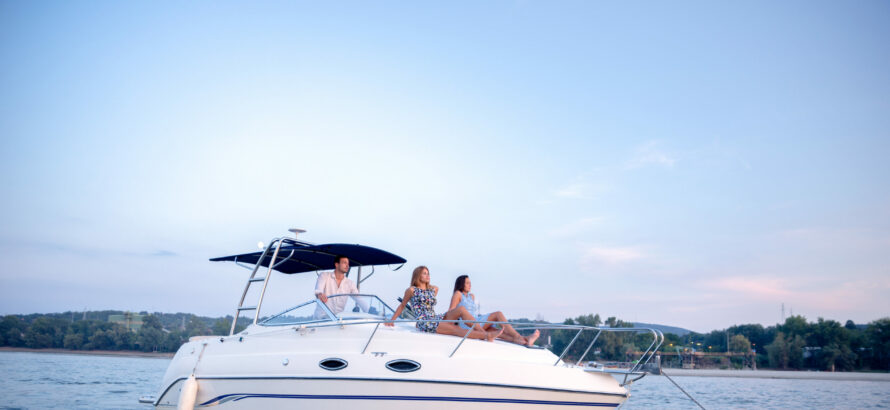
Driving in the rain can be a slippery situation: slick road conditions, poor visibility and possible hydroplaning or skidding are some of the risks, particularly in the spring. “Each year, 75% of weather-related vehicle crashes occur on wet pavement.” Thus, it’s important to know how to drive safely in rainy weather. [1]
Smart drivers know techniques for driving in the rain, avoiding hydroplaning and using the vehicle’s safety features. Review the article for tips on driving in wet conditions that you can save for a rainy day.
Safety tips for driving in the rain
Turn on headlights
It’s critical to turn on your headlights while driving in the rain, whether it’s light or dark out. Many states require it. You’ll see better, and other drivers can see you better too. Keep your headlights clean to ensure the best possible visibility. [2]
Turn on your defroster
To clear fogged-up windows, turn on the defroster. It’s a simple yet critical detail that makes a difference in your ability to see the road and drive safely. [2]
Maintain tire tread
Before driving in the rain, examine the tread on your tires. Worn tread decreases traction and increases the likelihood of skidding. Test your tread by inserting a penny between the treads upside down. If Lincoln’s head is covered, tire tread depth is good. If Lincoln’s head is uncovered, it’s too low, and the tire should be replaced. [2]
Avoid using cruise control
Do not use cruise control on wet pavement. Cruise control may interpret loss of traction as reducing speed and increase acceleration to compensate, which may cause the vehicle to veer dangerously. [2]
Use windshield wipers and water-repellent products
It sounds obvious, but turn on the windshield wipers when it rains. You need to have a clear view of the road and your surroundings. You can also use rain-repellent products on your car windows to help proactively clear water. [2]
More tips for driving in the rain
- Keep both hands on the steering wheel at all times.
- Eliminate distractions; put away your cell phone, turn down the radio, tune out people talking, etc.
- Keep a safe distance between you and the vehicle ahead, ensuring you have plenty of space to stop suddenly. And use extra caution when driving near bikes and trucks.
- Maintain a safe speed. In general, you should reduce your speed by 10 mph for each level you increase your windshield wiper speed.
- Avoid flooded roads. Deep water can stall your engine and even cause your vehicle to float.
- When safe to do so, drive in the middle lanes, because water is often deeper in the outside lanes.
- Drive in the tracks of the vehicles ahead of you.
- Don’t follow large trucks and buses too closely. Spray from their large tires can hit your windshield and temporarily obscure your vision.
- Watch for brake lights ahead.
- If heavy rain is making it difficult to see, drive to a safe place and wait until visibility improves. [1]
- Avoid breaking suddenly. On wet roads, steer gently and smoothly. Go slowly and allow enough room between cars. [2]
How to avoid hydroplaning
Hydroplaning occurs when a vehicle loses traction after it hits a patch of water. Water builds up on front of the tires so fast that the car’s weight can’t push it out of the way, causing it to ride on top of the water and slide until traction is restored.
Tips to avoid hydroplaning
- Maintain a controlled speed, especially on curves.
- Steer and brake lightly; sudden corrections can cause you to lose traction.
- Keep tires properly inflated, and be sure there’s good tread depth. [2] [3]
What to do if you hydroplane
- Stay calm and avoid panicking
- Take your foot off the gas to help slow your vehicle. You may lightly tap the breaks if your car has antilock brakes.
- Do not jerk the steering wheel around.
- After you’ve gained control of the car, don’t stop immediately; continue to slow your car down carefully.
- If you need to pull over, do so safely by pulling onto the shoulder. [3]
When is driving in the rain most dangerous?
Driving in the rain at night can be treacherous due to limited visibility. If it is raining hard enough, it may be difficult to see even 10 feet or so in front of your car. Roads are also the slickest when it has just started to rain or drizzle because the moisture mixes with any oil or dust that is on the surface of the pavement. [4]
Is driving in the rain bad for your car?
Car breakdowns increase during wet weather. The moisture can cause problems with engines and electrical systems, especially in older vehicles. However, many rain-related breakdowns are caused by driving through deep-standing water that can do extensive damage to the engine.
Rain also can increase your chances of getting into an accident. That’s why it’s important to take proper precautions when you’re on the road during a downpour. Taking extra care to remain within the speed limit and to stay a safe distance from other vehicles can help reduce your risk of getting into an accident. [5]
Safe driving discounts
At Nationwide, we’re a major proponent of safe and defensive driving, particularly in rainy conditions, which is why we offer a number of options to save on car insurance if you are a safe driver.
Sources:
[1] “Rain and Flooding,” U.S. Department of Transportation, ops.fhwa.dot.gov/weather/weather_events/rain_flooding.htm (Accessed March 2025).
[2] “21 Tips for Driving Safely in the Rain,” DefensiveDriving.org, defensivedriving.org/dmv-handbook/drive-safely-rain (Accessed March 2025).
[3] “Avoid Hydroplaning Through Tire & Driver Education,” Bridgestone Tire, bridgestonetire.com/learn/maintenance/hydroplaning (Accessed March 2025).
[4] “What to Do If You’re Caught Driving in Severe Weather,” DriversEd.com driversed.com/trending/what-do-if-youre-caught-driving-severe-weather (Accessed March 2025).
[5] “Safety Moment – Driving in Wet Weather,” Rob Boyle, airswift.com/blog/driving-in-wet-weather (Accessed March 2025).
Disclaimers:
The information included is designed for informational purposes only. It is not legal, tax, financial or any other sort of advice, nor is it a substitute for such advice. The information may not apply to your specific situation. We have tried to make sure the information is accurate, but it could be outdated or even inaccurate in parts. It is the reader’s responsibility to comply with any applicable local, state, or federal regulations. Nationwide Mutual Insurance Company, its affiliates and their employees make no warranties about the information, nor guarantee of results, and they assume no liability in connection with the information provided. Products underwritten by Nationwide Mutual Insurance Company and affiliates. Columbus, Ohio. Subject to underwriting guidelines, review and approval. Products and discounts not available to all persons in all states. Nationwide, Nationwide N and Eagle and Nationwide is on your side are services marks of Nationwide Mutual Insurance Company.
© 2025 Nationwide



